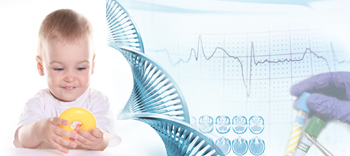Biomarkers
Please explore the following pages to learn more about biomarkers in autism.
A biomarker is a measurable feature that can be used to predict a biological state. Examples of biomarkers might include levels of proteins in the blood, patterns of activity in the brain, or the amount of time it takes for an individual to complete a task. The heterogeneous nature of Autism Spectrum Disorders has made the identification of an autism biomarker a difficult task. Currently, physicians do not use biomarker measurements in the clinic to predict the onset of autism in children. Early intervention in children with autism is known to improve behavioral outcomes. Because biomarkers may help identify children with autism earlier in infancy, autism biomarker identification is an area of intense interest. Brain imaging studies, in particular, have shown promising results.
Key Points
- A biomarker can be used to predict the presence or severity of a disorder.
- Scientists and physicians are actively searching for reliable autism biomarkers.
- No widely accepted autism biomarkers exist to date.
Misconception
Hand flapping is a biomarker of autism.
Fact
Although hand flapping is a common characteristic of children with autism, it does not predict that a child has autism or will develop autism.
Read about other misconceptions.


